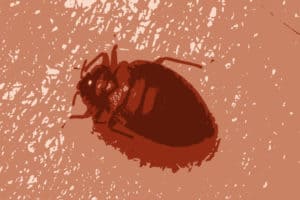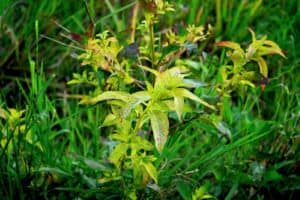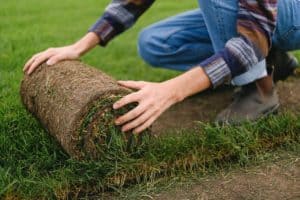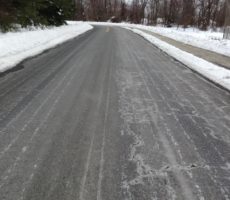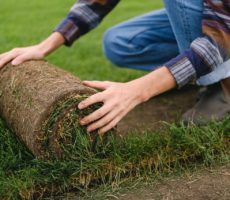Disclaimer: Some of the links in this article are affiliate links that may provide me with a small commission at no cost to you. Read about affiliate disclosure in my privacy policy.
When it comes to growing grass, most people wait for too long before the first cut. Turfgrass specialists at Purdue University have some good advice on how to grow grass and when to cut it. So, when should you mow your new grass?
Since not every grass grows at the same speed, you should cut the grass once it grows above a certain height. That’s 1.5” for Kentucky bluegrass, perennial rye, and fine fescue, and 2” for tall fescue. This doesn’t hurt the lawn if you do it carefully, and it pushes the grass to fill in quickly.
Therefore, once the grass grows taller than those heights and you can cut at least 10% of the grass, you can safely mow it.
It doesn’t matter if you can only cut a small part of the grass, just make sure to use a light mower and be careful. A push mower is a good choice.
When to Mow Overseeded Grass?
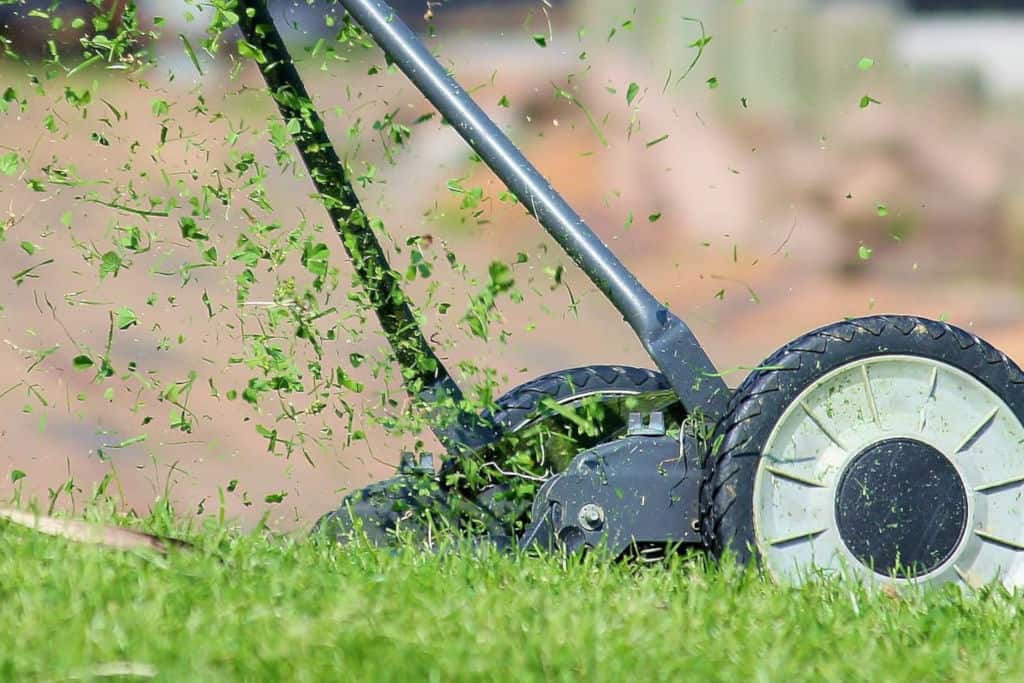
To overseed properly, scalp the lawn, plant the seeds, and wait 3 weeks before mowing. Once you start mowing, be careful not to damage the new seedlings.
Mow the grass when the existing grass starts overshadowing the new one, and bag the clippings. Repeat the process after a week, and then resume your regular mowing schedule. Lawn maintenance skills are crucial for success.
When to Mow Your Newly Seeded Lawn?
According to Turfgrass Extension specialists at Purdue University, the newly seeded lawns should be mowed early and often.
Kentucky bluegrass, perennial rye, and fine fescue should be mowed at 1.5 inches, and tall fescue at 2 inches. Increase the mower height to 2.0-3.5 inches for Kentucky bluegrass, perennial rye, and fine fescue, and 2.5-4.0 inches for tall fescue after the first 3 to 4 mowings.
Choose a light push mower and mow based on height rather than time, typically 1-2 weeks after germination. Opt for the Earthwise 1715-16EW mower, which can cut up to 2.5 inches and is highly rated.
What Happens if You Mow New Grass Too Soon?
Mowing the grass too soon or carelessly can damage the root system and pull the seedlings out of the ground. New seeds need time to germinate and to put down roots, so you’ll need to give them at least a few weeks to germinate before you can plan to mow.
If you know the right height to mow your new grass, then you can’t mow it too soon. As long as you can trim at least 10% of the new grass, you can mow your grass. Check above for the right hights for different types of grass.
Does Cutting New Grass Help It Grow?
Cutting new grass helps the grass spread and fill in quickly. Low regular mowing will encourage lateral growth, and trimming the top sends the energy to the root growth which helps it grow. This also allows more sun to penetrate and encourage growth, just make sure ot use sharp blades.
And remember never to take off more than ⅓ of the grass blades, as it can cause damage to your grass. Cutting no more than one third is just enough to keep your lawn healthy and not too much to stunt the growth.
To avoid this, try not to get into your habit of leaving the grass to grow too long and then cutting it too short. Doing this often will damage your lawn. Cutting long grass short too many times will stunt growth and open up the turf for the weeds to thrive.
Should You Bag or Mulch When Mowing New Grass?
Your first few mows should generally be bagged, as this will give it more room to fill in. After the first few mowings, you can leave the clippings. However, mulching is also possible, as long as you’re not leaving clumps of grass.
For mulching, you need a proper mulching blade for your mower. You can get a mulching blade for about $20-30 on Amazon. These mulching blades are specially designed for mulching and produce very small clippings that can be easily decomposed.
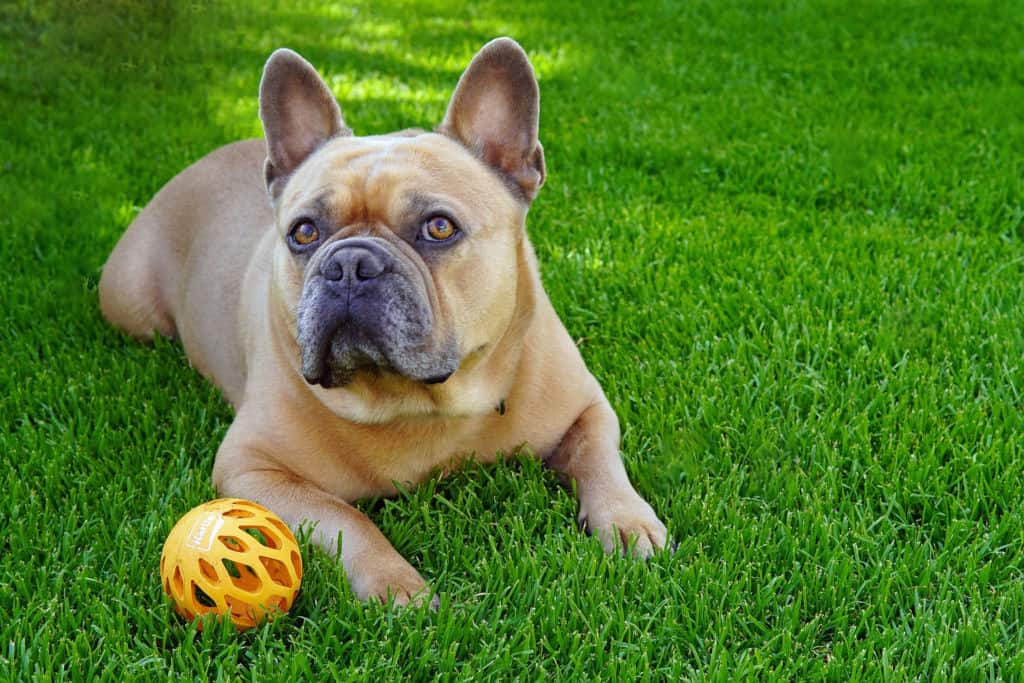
Mulching is a good option for those who want the nutrients returned to the lawn, which means less fertilizer used on your lawn, without contributing to thatch buildup, while increasing microbial activity.
Just make sure not to leave any clumps on the grass. In case of clumps, just go over the lawn quickly with a blower to break up any clumps left.
How to Avoid Damaging New Grass While Mowing?
Mowing new grass can be tricky, as it’s not yet established enough to withstand the stress of being cut. Here are some tips to help you avoid damaging new grass while mowing:
- Wait until the grass is at least 3 inches tall before mowing it for the first time. This will allow the roots to become established and will give the blades of grass a chance to strengthen.
- Set your mower blades to a high setting. New grass should be cut no shorter than 2 to 2 1/2 inches. Mowing at a higher setting will allow the grass to grow thicker and will also help to prevent damage to the grass blades.
- Use a sharp mower blade. A dull blade can tear the grass instead of cutting it cleanly, which can lead to damage and brown spots. Sharpen your blade regularly to ensure a clean cut.
- Avoid mowing wet grass. Mowing wet grass can cause the blades to stick together, which can result in an uneven cut and can also damage the grass.
- Alternate your mowing pattern. Mowing in the same direction every time can lead to compacted soil and uneven growth. Change your mowing pattern each time you mow to prevent this from happening.
By following these tips, you can help ensure that your new grass stays healthy and lush.
Should You Mow Before Overseeding?
Mowing before overseeding is generally recommended because it allows for new grass to get some sun, so it’s best to cut it as low as possible. A height of about 1.5 to 2 inches is good so that the existing grass isn’t too tall that it blocks the sun from the new seedlings. Make sure to bag the clippings.
Since you’ll probably be seeding new grass in spring or fall, there shouldn’t be any problems with drought stressing the grass, which is why you can go so low as to scalp it.
Tools and Equipment to Use When Mowing New Grass
When mowing new grass, it’s important to have the right tools and equipment to ensure that the grass is cut evenly and doesn’t sustain damage. Here are the tools and equipment that you will need:
- Lawn mower: A good lawn mower such as Greenworks is essential for mowing new grass. Choose a mower with sharp blades and adjustable cutting height to set the blades to the correct height for new grass.
- Mower bag or rake: If you’re using a rotary mower, you’ll need a bag attachment to collect the clippings. If you’re using a reel mower, you’ll need a rake to collect the clippings.
- Edger: An edger is useful for trimming the edges of the lawn and creating a neat border between the lawn and other landscaping elements.
- Blower: A leaf blower can be useful for clearing away grass clippings and other debris after mowing.
- Safety gear: Always wear appropriate safety gear, including eye protection and earplugs, when mowing.
- Fuel and oil: Make sure you have plenty of fuel and oil on hand before you start mowing.
By having the right tools and equipment, you can ensure that your new grass is mowed evenly and without damage.
FAQs:
How long does it take for grass seed to grow?
Takes about 2-4 weeks for the grass to germinate, and another 4 to establish. Seed germination can happen at different speeds depending on the mix you used. Perennial ryegrass is usually the fastest growing, followed by fine-leaf fescues and Kentucky Bluegrass.
What to do if grass seed doesn’t grow?
Most lawns in bad shape have unique issues, and there may be different answers depending on the lawn. Usually, if you’ve been regularly watering your newly seeded grass, but it doesn’t grow then it may be time to fertilize it. Newly seeded grass should be fertilized about 6 weeks after seeding, but it can happen sooner if needed.
There may also be too much nitrogen in some areas on your lawn. To find this out, you need to test the soil. If too much nitrogen is encountered, you should water these areas heavily for a few weeks to wash out some of that nitrogen, then try seeding again.
Additionally, you could just cut the sod that isn’t working out, and replace the area with a fresh new sod, ready for the new grass. Find out the best sod cutters you can get, and whether you should buy or rent.
Should I cut new grass before winter?
Typically, it’s considered best to trim your grass to 1.5 to 2 inches before the snow, once you can confirm that the grass has stopped top growth and right before prolonged freezing temperatures. You should never cut frozen grass because it damages the plant.
Keep in mind that you should have seeded at least 3-4 weeks before the typical first frost in your area. This way you have time to mow, and the grass had time to establish itself.
How long after planting grass seed can you walk on it?
Generally, light walking on the newly seeded grass is OK, whether overseed or new seed. If it’s an overseed then you should be fine walking on grass the next day. If it’s a new seed, then light foot traffic is fine, but consistent foot traffic is not recommended for at least a month.
As far as pets and critters go, keeping the animals off the lawn for 1 to 2 months is a good idea, 4 weeks at least. You may be fine with just walking the dog on a leash in a week or two, but otherwise, it’s risky to just let the dog run around before the grass is established.
How Often Can You Cut New Grass?
New grass should be cut often, and as soon as it gets above 1.5 inches for Kentucky bluegrass, perennial rye, and fine fescue, and above 2 inches for tall fescue. Do this 3 or 4 times, after which you can increase the height of your mower. You should cut it as often as it needs to, but usually every 5 to 7 days.
There’s no time when you need to cut it, so the best thing is to mow when it’s ready to mow, or when it gets above those mentioned heights. Be sure not to mow with something heavy, and try to be careful making turns. The new turf doesn’t have deep roots so the mower can do a lot of damage if not careful.



